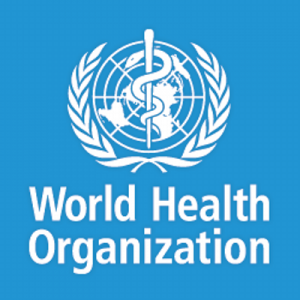GENEVA, Switzerland. The Zika virus is “spreading explosively” in the Americas, which could see up to 4 million cases over the next year, international health officials said Thursday, announcing a special meeting next week to decide if they should declare an international health emergency.
The warning from the World Health Organization came amid a call to arms by officials on both sides of the Atlantic over the mosquito-borne virus, which has been linked to a spike in a rare birth defect in Brazil.
Brazil’s president – noting there is no medical defense against the infection – called for a crusade against the mosquitoes spreading it.
“As long as we don’t have a vaccine against Zika virus, the war must be focused on exterminating the mosquito’s breeding areas,” said President Dilma Rousseff.
The U.N. health agency called the special session in part to convey its concern about an illness that has sown fear among many would-be mothers. It may also have acted quickly because the agency was criticized for its slow response to the Ebola epidemic in West Africa.
Meanwhile, U.S. health officials said Thursday while they have not yet seen spread of the disease in the 50 states, the number of U.S. travelers infected over the last year in the Caribbean or Latin America has climbed to 31.
The Zika virus was first discovered in Africa in 1947. But until last year, when it was found in Brazil, it had never been a threat in the Western Hemisphere.
The virus causes no more than a mild illness in most people. But there is mounting evidence from Brazil suggesting infection in pregnant women is linked to abnormally small heads in their babies – a birth defect called microcephaly.
Earlier this month, U.S. health officials advised pregnant women to postpone visits to Brazil and other countries in the region with outbreaks.
“For the average American who’s not traveling, this is not something they need to worry about,” said Dr. Anne Schuchat, of the U.S. Centers for Disease Control and Prevention.
But “for people who are pregnant and considering travel to the affected areas, please take this seriously,” she added. “It’s very important for you to understand that we don’t know as much as we want to know about this yet.”
In Geneva, WHO Director-General Dr. Margaret Chan noted it had been less than a year since the virus arrived in the Americas, “where it is now spreading explosively.”
Although there is no definitive proof that the Zika virus is behind the spike in brain defects in Brazil, “the level of alarm is extremely high,” she added.
“The possible links, only recently suspected, have rapidly changed the risk profile of Zika from a mild threat to one of alarming proportions,” Chan said.
Researchers are also looking into a potential tie between Zika infections and cases of Guillain-Barre syndrome, which can cause temporary paralysis.
According to the CDC, the Zika virus is now in more than 20 countries, transmitted by the same mosquito that spreads other tropical illnesses such as dengue and yellow fever.
Sylvain Aldighieri, head of WHO’s epidemic response team in the Americas, estimated there could be 3 million to 4 million Zika infections in the region over the next year. He said the agency expects “huge numbers” of infections because of the widespread presence of the Aedes mosquitoes that spread Zika and because people in the region have no natural immunity.
The same mosquito species spreading Zika in Latin America is also found in the southern United States. However, U.S. health officials reiterated Thursday they don’t think the United States is vulnerable to a widespread outbreak of the Zika virus.
WHO warned China and all other countries that have dengue fever to be on the lookout for Zika infections. The agency said it could be many years before a vaccine is available and it might take six to nine months before there’s any data showing a causal relationship between Zika and the babies born with malformed heads.
Monday’s special session does not guarantee that a global emergency will be declared – WHO has held 10 such meetings to assess the Middle Eastern respiratory syndrome coronavirus and no emergency has been announced.
Declaring a global emergency is akin to an international SOS signal and usually brings more money and action to address an outbreak. The last such emergency was announced for the devastating 2014 Ebola outbreak in West Africa, which eventually ending up killing over 11,000 people. Polio was declared a similar emergency the year before.
Marcos Espinal, WHO’s director of infectious diseases in the Americas region, said Brazil is conducting studies to determine if there is scientific evidence that Zika virus causes birth defects and neurological problems. More than 4,000 suspected cases have been reported in Brazil since October. However, tests so far have shown hundreds of them were not microcephaly.
Brazilian authorities estimate the country could have up to 1 million Zika infections by now. Most infected people don’t get sick and those who do mostly suffer mild symptoms such as fever, rash, joint pain and red eyes.
The outbreak has mostly been in the poor and underdeveloped northeast, but the prosperous southeast, where Sao Paulo and Rio de Janeiro are located, is the nation’s second hardest-hit region. Rio de Janeiro is of special concern, since it will host the Aug. 5-21 Summer Olympic games that are expected to be attended by millions from around the world.
International Olympic Committee President Thomas Bach said the fact the Olympics will be held in August – during Brazil’s winter – could limit Zika’s impact on the games. Cooler weather tends to cut down mosquito populations.
Earlier this week, officials in Rio ramped up their fight against the mosquitoes that spread Zika, dispatching fumigators to the Sambadrome, where the city’s Carnival parades will take place next month.
There is no treatment or vaccine for Zika, which is in the same family of viruses as dengue. Scientists have struggled for years to develop a dengue vaccine; the first such shot made by Sanofi Pasteur was licensed last year in Brazil.
Credit: AP
——————————————————————————————————–
“Zika Virus: The Five Things You Need To Know” By CNN
A relatively new mosquito-borne virus is prompting worldwide concern because of an alarming connection to a neurological birth disorder and the rapid spread of the virus across the globe.
The Zika virus, transmitted by the aggressive Aedes aegypti mosquito, has now spread to at least 24 countries. The Centers for Disease Control and Prevention is warning pregnant women against travel to those areas; health officials in several of those countries are telling female citizens to avoid becoming pregnant, in some cases for up to two years.
“That’s a pandemic in progress,” said Dr. Anthony Fauci, director of the National Institute of Allergy and Infectious Diseases at the National Institutes of Health. “It isn’t as if it’s turning around and dying out, it’s getting worse and worse as the days go by.”
1. What is Zika and why is it so serious?
The Zika virus is a flavivirus, part of the same family as yellow fever, West Nile, chikungunya and dengue. But unlike some of those viruses, there is no vaccine to prevent Zika or medicine to treat the infection.
Zika is commanding worldwide attention because of an alarming connection between the virus and microcephaly, a neurological disorder that results in babies being born with abnormally small heads. This causes severe developmental issues and sometimes death.
Since November, Brazil has seen 4,180 cases of microcephaly in babies born to women who were infected with Zika during their pregnancies. To put that in perspective, there were only 146 cases in 2014. So far, 51 babies have died.
Other Latin American countries are now seeing cases in newborns as well, while in the United States one Hawaiian baby was born with microcephaly after his mother returned from Brazil. In Illinois, two pregnant women who traveled to Latin America have tested positive for the virus; health officials are monitoring their pregnancies.
The CDC is also asking OB-GYNs to review fetal ultrasounds and do maternal testing for any pregnant woman who has traveled to one of the 24 countries where Zika is currently active.
A smaller outbreak of Guillain-Barre syndrome, a rare autoimmune disorder that can lead to life-threatening paralysis, is also linked to Zika in a several countries.
2. How is Zika spread?
The virus is transmitted when an Aedes mosquito bites a person with an active infection and then spreads the virus by biting others. Those people then become carriers during the time they have symptoms.
In most people, symptoms of the virus are mild, including fever, headache, rash and possible pink eye. In fact, 80% of those infected never know they have the disease. That’s especially concerning for pregnant women, as this virus has now been shown to pass through amniotic fluid to the growing baby.
“What we now know,” said Dr. Lyle Petersen, director of the CDC’s Division of Vector-Borne Diseases, “is that fetuses can be infected with the virus. That’s not new for infectious diseases, but it is new for this virus.”
“This is a very remarkable and unusual situation,” agreed Fauci, “because the other flaviviruses don’t do that to our knowledge. You just don’t see that with dengue or West Nile or chikungunya.”
In addition, the CDC says there have been documented cases of virus transmission during labor, blood transfusion, laboratory exposure and sexual contact. While Zika has been found in breast milk, it’s not yet confirmed it can be passed to the baby through nursing.
There have been only two documented cases linking Zika to sex. During the 2013 Zika outbreak in French Polynesia, semen and urine samples from a 44-year-old Tahitian man tested positive for Zika even when blood samples did not. Five years before that, in 2008, a Colorado microbiologist named Brian Foy contracted Zika after travel to Senegal; his wife came down with the disease a few days later even though she had not left northern Colorado and was not exposed to any mosquitoes carrying the virus.
3. Where is the Zika virus now?
The Zika virus is now being locally transmitted in Barbados, Bolivia, Brazil, Cape Verde, Colombia, Dominican Republic, Ecuador, El Salvador, French Guiana, Guadeloupe, Guatemala, Guyana, Haiti, Honduras, Martinique, Mexico, Panama, Paraguay, Puerto Rico, Saint Martin, Suriname, Samoa, the U.S. Virgin Islands and Venezuela, says the CDC.
Zika has arrived in the United States, but only from travelers returning from these infected areas. The concern, of course, is whether these imported cases could result in locally transmitted cases within the United States.
The Aedes albopictus, or Asian tiger mosquito, which along with Aedes aegypti transmits Zika virus, is present in many areas of the United States.
If mosquitoes in the United States do become carriers, a model created by Toronto researchers found more than 63% of the U.S. population lives in areas where Zika virus might spread during seasonally warm months. A little over 7% of Americans live in areas where the cold might not kill off the mosquito in the winter, leaving them vulnerable year round.
4. What can you do to protect yourself against Zika?
With no treatment or vaccine available, the only protection against Zika is to avoid travel to areas with an active infestation. If you do travel to a country where Zika is present, the CDC advises strict adherence to mosquito protection measures: Use an EPA-approved repellent over sunscreen, wear long pants and long-sleeved shirts thick enough to block a mosquito bite, and sleep in air-conditioned, screened rooms, among others.
If you have Zika, you can keep from spreading it to others by avoiding mosquito bites during the first week of your illness, says the CDC. The female Aedes aegypti, the primary carrier of Zika, is an aggressive biter, preferring daytime to dusk and indoors to outdoors. Keeping screens on windows and doors is critical to preventing entry to homes and hotel rooms.
5. What’s being done to stop Zika?
Researchers are hard at work in laboratories around the world trying to create a Zika vaccine. Until those efforts bear fruit, health officials are implementing traditional mosquito control techniques such as spraying pesticides and emptying standing water receptacles where mosquitoes breed. The CDC is encouraging local homeowners, hotel owners and visitors to countries with Zika outbreaks to join in by also eliminating any standing water they see, such as in outdoor buckets and flowerpots.
Studies show local control is only marginally effective, since it’s so hard to get to all possible breeding areas. And since Aedes aegypti has evolved to live near humans and “can replicate in flower vases and other tiny sources of water,” said microbiologist Brian Foy, the mosquitoes are particularly difficult to find and eradicate.
Another prevention effort is OX513A, a genetically modified male Aedes aegypti, dubbed by critics as the “mutant mosquito” or “Robo-Frankenstein mosquito.” The creation of British company Oxitec, OX513A is designed to stop the spread of Zika by passing along a gene that makes his offspring die. Since females only mate once, in theory this slows the growth of the population. Each OX513A carries a fluorescent marker, so he can be tracked by scientists.
Key West, Florida, residents gave the genetically modified male his monster nicknames while protesting a trial release of the mosquito in 2012 as a way to combat an outbreak of dengue fever in South Florida. That effort is under review by the Food and Drug Administration.
But field trials in Brazil in 2011 were hugely successful, according to Oxitec, eliminating up to 99% of the target population. A new release of males in the Pedra Branca area of Brazil in 2014 was 92% successful, according to the company. The mosquito has also been tested in the Cayman Islands, Malaysia and Panama.
Last year, Oxitec announced plans to build an OX513A mosquito production facility in Piracicaba, Brazil, that it says will be able to protect 300,000 residents.
Credit: CNN




